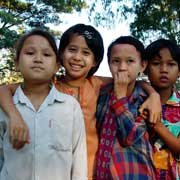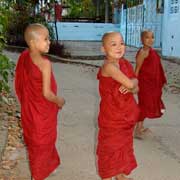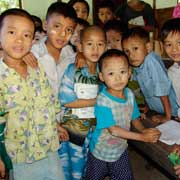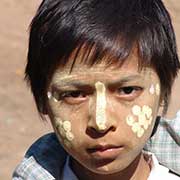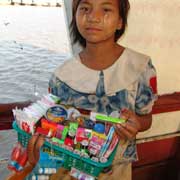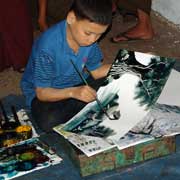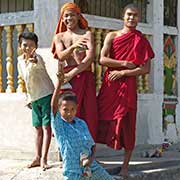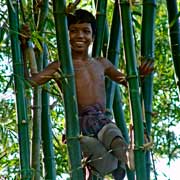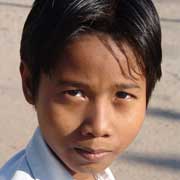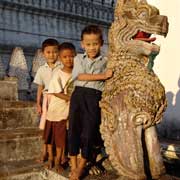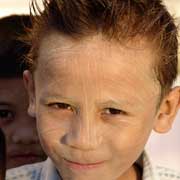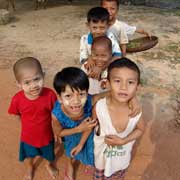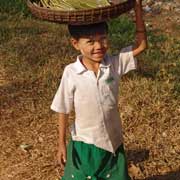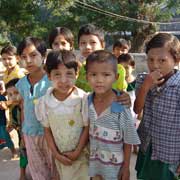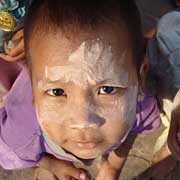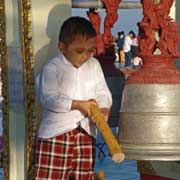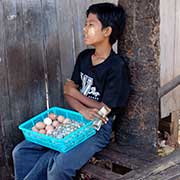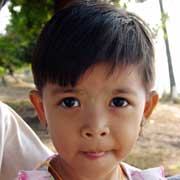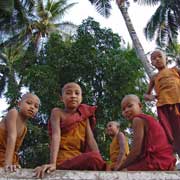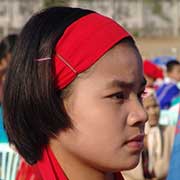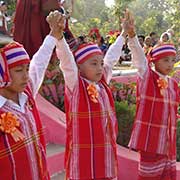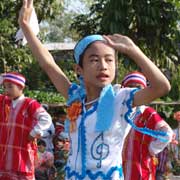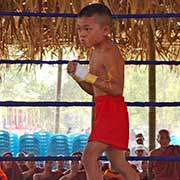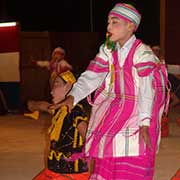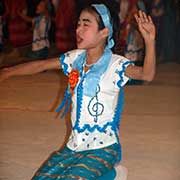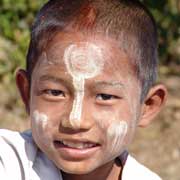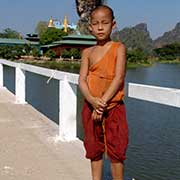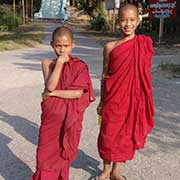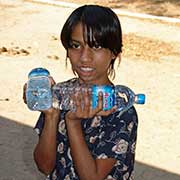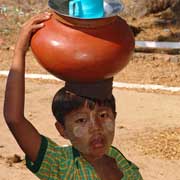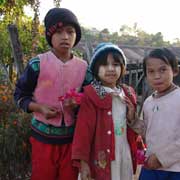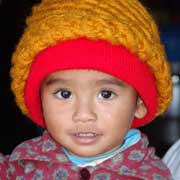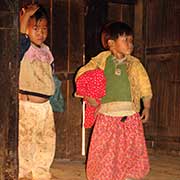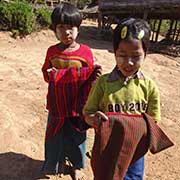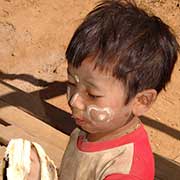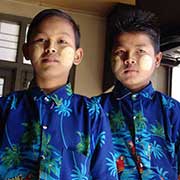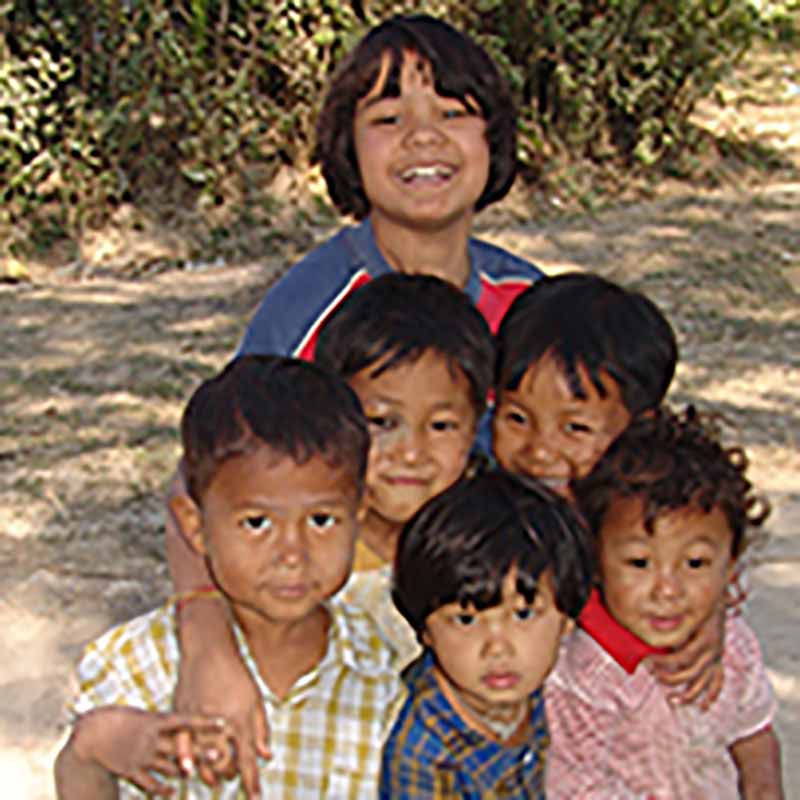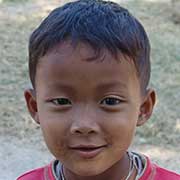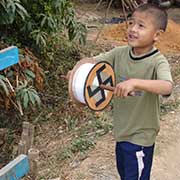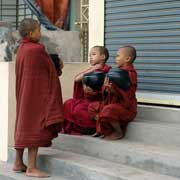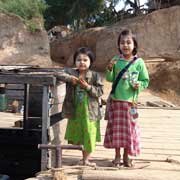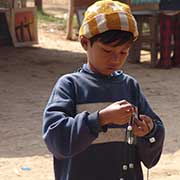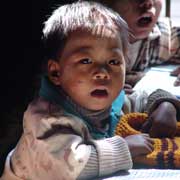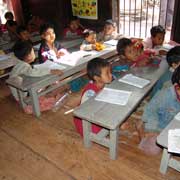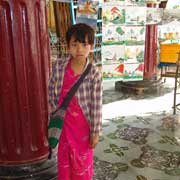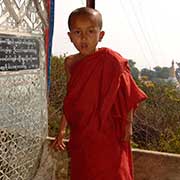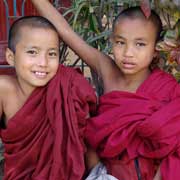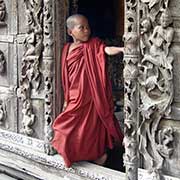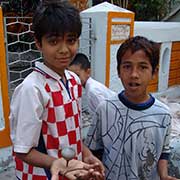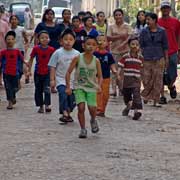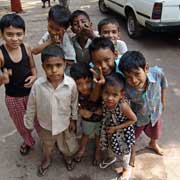Photos of Children of Myanmar
Children of Myanmar
Myanmar's children are friendly, cheerful and self-sufficient. Many work when they are not in school, selling food and drink along the road, on the ferry or on railway stations. Ko Ko Aung, a very talented boy, is well known in Yangon, where he paints landscapes, sitting on the street.
you may then send it as a postcard if you wish.
Child labour has been and still is common in Myanmar. On the other hand young boys are expected to become a novice monk (samanera) between the ages of 10 and 20 for a time, participating in "shinbyu", the novitiation ceremony once they are seven or older. It is a great honour for the family.
This is one aspect of culture; most children (and women) tend to paint their faces with thanaka paste made from ground bark of particular trees. It is applied for cosmetic beauty but also cools the skin and protects it from sunburn. Children from ethnic minorities, like the Karen, learn their culture; during festivities like Karen New Year various groups, in colourful costumes, sing and perform very fast-moving, superbly coordinated don dances. Boys also perform in boxing matches, accompanied by traditional music.
Unfortunately child soldiers have played and continue to play a major part in the Burmese Army as well as Burmese rebel movements. It was reported in The Independent newspaper in June 2012 that "Children are being sold as conscripts into the Burmese military for as little as $40 and a bag of rice or a can of petrol." And an article in the Bangkok Post on 23 December 2012 reported that the Tatmadaw, Myanmar Armed Forces, continued to use child soldiers including during the army's large offensive against the Kachin Independence Army that month. The newspaper reported that "many of them were pulled off Yangon streets and elsewhere and given a minimum of training before being sent to the front line." This is an aspect of life that is hidden from the outside world.



